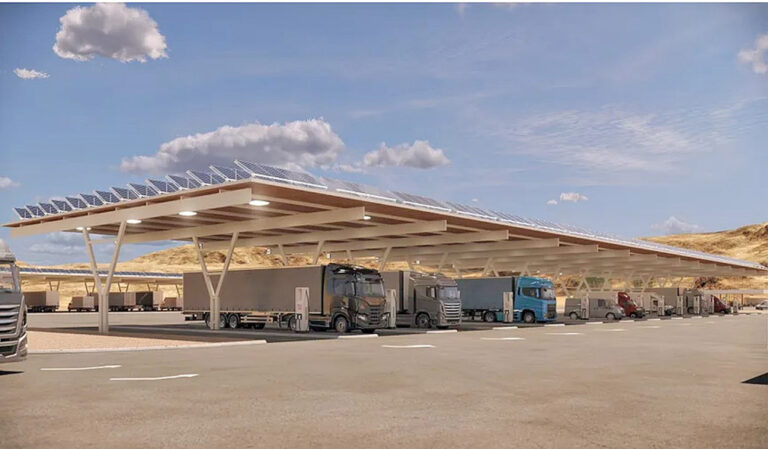SAN FRANCISCO — Electric fleet power company TeraWatt Infrastructure is developing the first network of high-powered charging centers for heavy-duty and medium-duty electric trucks along the Interstate 10, stretching from the Port of Long Beach, California to El Paso, Texas.
The I-10 Electric Corridor will consist of multiple facilities, called TeraWatt Charging Centers, that will be spread across California, Arizona and New Mexico, a news release stated.
“TeraWatt Charging Centers will be purpose-built to serve heavy-duty and medium-duty electric fleets, featuring dozens of direct current (DC) fast chargers, pull-through charging stalls, on-site driver amenities and reliable operations,” according to the news release.
This will include “resiliency generation and zero carbon electricity options,” the company said.
TeraWatt will offer access to these sites both for the purposes of long-haul and local electric trucking operations.
“Long-haul trucking electrification represents a significant opportunity to reduce transportation sector emissions, but hinges on the rapid scale up of specialized charging infrastructure,” TeraWatt CEO, Neha Palmer said. “Our real estate and energy infrastructure development platform uniquely positions TeraWatt to solve the ‘charging problem’ for trucking operators, making freight electrification achievable within their operations.”
The TeraWatt Charging Centers will be located approximately 150 miles apart to support the mileage range of commercially available electric trucks. These sites are located less than one mile from the nearest highway exit for ease of access and range in size between four to 100 acres, depending on location.
TeraWatt is partnering with local and state governments and utilities and plans to leverage various grants and incentives, which, the company said, will provide additional benefits to charging customers.
The Trucker News Staff produces engaging content for not only TheTrucker.com, but also The Trucker Newspaper, which has been serving the trucking industry for more than 30 years. With a focus on drivers, the Trucker News Staff aims to provide relevant, objective content pertaining to the trucking segment of the transportation industry. The Trucker News Staff is based in Little Rock, Arkansas.
















Zero carbon? hahaha
It seems like 150 miles between charges isn’t much time. The trucker barely gets going and then he has to stop again for another charge. How much money is a charge? Saving anything by using electricity? How does gas compare?
makes no sense.